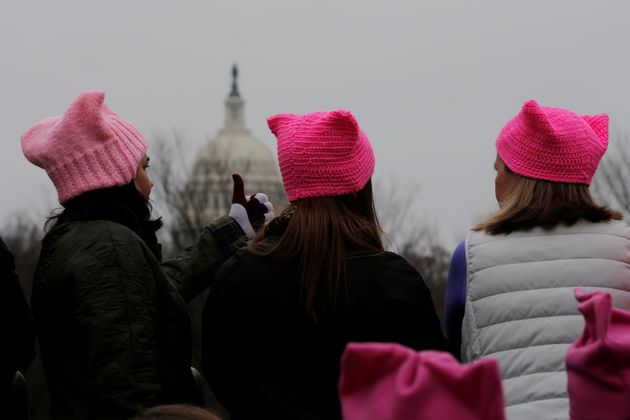
Last week I wrote that if Democrats won big in the midterm elections, it might be because women have turned on Trump. Well, Democrats did win big – they took back control of the House of Representatives. And it seems as though taking women voters away from the Trump camp is, at least in part, how they did it.
Some races are still too close to call, but at current count it looks as though Democrats will win at least 219 seats in the House of Representatives. That’s a gain of 26 seats from the 2016 election, three more than the 23 gains they needed to take back control of the House.
One of the biggest shocks of the 2016 presidential election was that so many women, particularly white women, voted for Trump over the country’s first female presidential candidate. But since then we have seen the meteoric rise of the #MeToo movement coupled with Trump’s increasingly poor track record on gender politics, culminating in his insistence on appointing Brett Kavanaugh to the Supreme Court despite credible allegations of sexual assault against him.
The question I asked leading up to the midterms was, will women have changed their mind about Trump in the post-Weinstein world? The answer, it seems, is yes.
Exit polls from the midterms gave Democrats an astounding 21-point lead among women over Republicans across the board. In the House, women preferred Democratic candidates by a 60-40 margin. On top of this, more women voted than ever – women voters turned out in large numbers for Democrats in seats all across the country. 59% of all women voted Democratic, compared with only 54% in 2016.
The data tells us this can be connected with Trump’s performance: men still approve of Trump by a slight margin, but his approval rating among women has plummeted to 39%. The data also tells us it may relate directly to #MeToo: 52% of women identified sexual harassment as a key issue for them in this election. 57% of men approve of Brett Kavanaugh’s appointment, while only 43% of women do.
A significant portion of white women voted for Trump in 2016 but changed their minds this year. In 2016, Trump had a nine-point lead among white women. In 2018, white women broke for Democrats by two points. This jump in support for Democrats among women can be seen most clearly in white college educated-women, white non-college-educated women and married women. It’s leading pollsters to declare a “Trexit” on behalf of white suburban woman.
The reason this phenomenon isn’t replicated among non-white women is that this group overwhelmingly voted for Clinton in 2016, and again overwhelmingly voted Democratic in yesterday’s midterms. This group were never in the Trump camp; his presidency was secured by white women and white voters more broadly. Some of the former group, it seems, have changed their minds about Trump. Unfortunately, the same can’t be said for the latter: white men turned out in droves for Republicans in this year’s election.
There’s some more bad news. Unfortunately, there were still a great deal of white women who voted Republican this year. Suburban women voted overwhelmingly for Florida gubernatorial candidate Ron DeSantis, who is associated with white nationalists and is a close ally of the president.
In Georgia, white women slightly increased their support for the Democrats – 50% voted Democratic, up from 30% in 2016 – but not by enough. The ambivalence of white women in this state, at least in part, led to Stacey Abrams’s loss to her Republican opponent Brian Kemp. If she had won, Abrams would have become the first black female governor in US history.
White women also helped Republican Ted Cruz retain his seat in Texas. Democrats were hoping to pull off what would have been an historic victory for their candidate, Beto O’Rourke, in what is usually a strongly red state. Unfortunately this was hampered by white voters – 59% of white women and 71% of white men voted for Cruz.
So it seems the #MeToo movement has shifted the dial somewhat among women voters; enough to help Democrats win back one half of the Congress and send a strong message to the president. But it’s not enough: exit polls show that white women failed to show up for Democrats in some key races. Let’s hope that the movement can be more inclusive and make sure that next time, no-one gets left behind.


